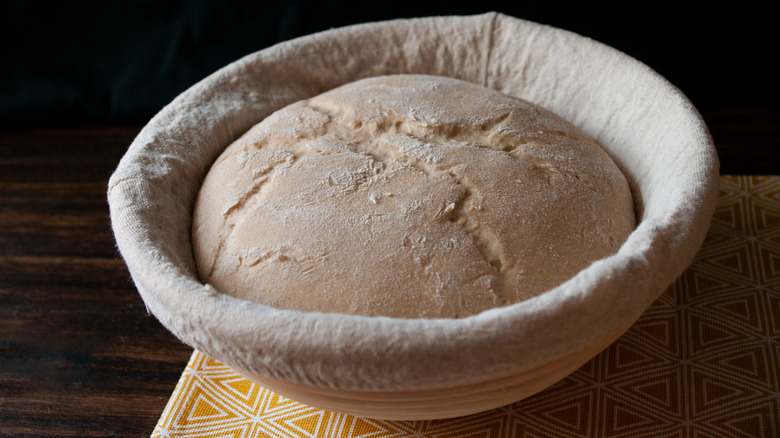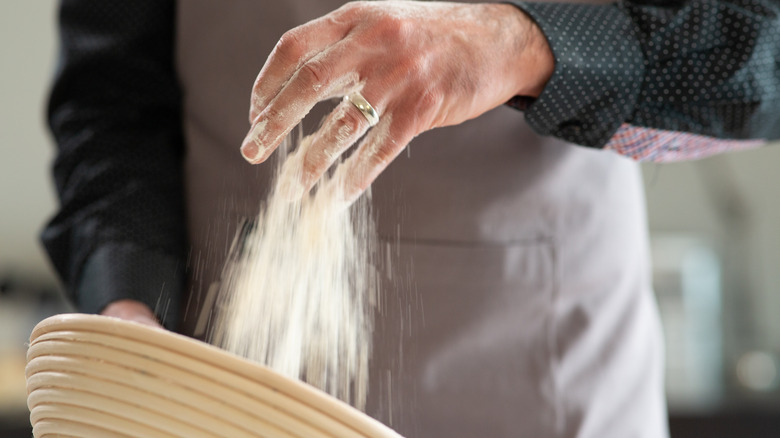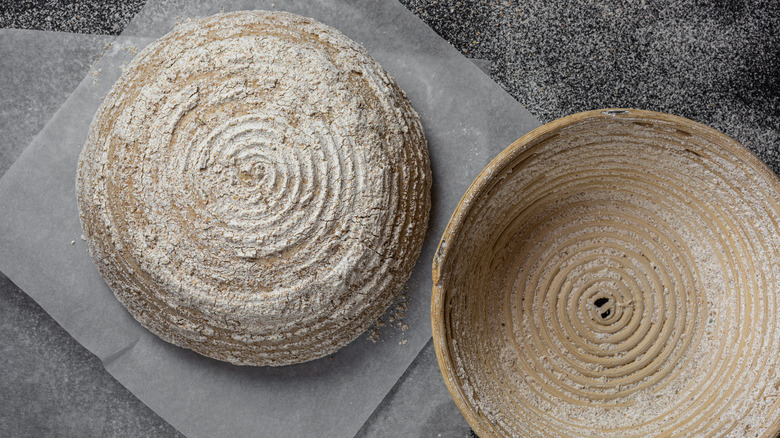What Is A Banneton Basket And Will It Improve Your Homemade Bread?
Baking your own bread at home is one of the most rewarding things you can do in your kitchen. Feeling the flour between your fingers, kneading the dough, watching it grow, and finally smelling the crust form in the oven can bring so much peace and tranquility to the moment. When you turn ingredients as simple as flour and water into something as satisfying as a chewy bite of fresh bread, there's usually a feeling of profound significance that follows.
Whether you've already joined the growing community of home bakers or are just thinking about diving into the world of baking, traditional sourdough bread is definitely among the most appealing choices. Do you know those decorative loaves with an ultra-thick crust and a chewy crumb full of delightful air pockets? These loaves of bread are usually more challenging to make, as they go through several stages of fermentation. Proofing is the final and most delicate step before baking, during which the dough sometimes doubles or triples in size, and it requires a special proofing basket (or banneton basket) to keep it in shape. But how do artisan bakers use banneton baskets to proof bread and should you have one in your kitchen?
Banneton basket is indispensable for bread leavening
If you ever get a chance to watch a master baker at work, you'll notice that underneath the generous dusting of flour, there's usually a very wet dough that has to be handled with care and affection. It depends on the type of bread, but leavened bread is the most fiddly to work with: The fluffier the bread you bake, the more delicate it'll be when it expands due to fermentation. So to avoid disturbing the dough, the banneton basket becomes an important component, also giving the bread the desired shape.
The proofing basket isn't just used to give the bread its distinctive body. It also provides adequate air circulation, so you can be sure you're creating the best conditions for your beautiful bread as it grows. And when the dough is finally ready to go into the oven, it can easily be flipped from the basket into the baking pan — all you need is enough flour each step of the way. The banneton basket is never washed, so batch after batch it develops a thin layer of flour, responsible for its non-stick quality — probably the most important feature of a good proofing basket.
Choosing a proofing basket for your kitchen
The most common banneton baskets are round and oval and can be made of different materials: Wood, cane, or sometimes plastic. Cane baskets look very pretty adding an artisanal touch to your baking; the original swirl is what makes those beautiful ridges you've seen on some loaves. Some banneton baskets are lined with a linen cloth, but you could also buy the liners separately. It's a good idea to use them as they provide additional humidity control, especially if you're baking at home. Just make sure to dust them with flour.
If you're still in doubt about whether you need a proofing basket, know that taking care of it is a breeze: all you have to do is to brush off excess flour and store it in a dry, well-ventilated place until your next batch of sourdough is ready to hop in again. All in all, a banneton basket makes the difference between properly leavened bread and an average loaf you'll never want to repeat again.


